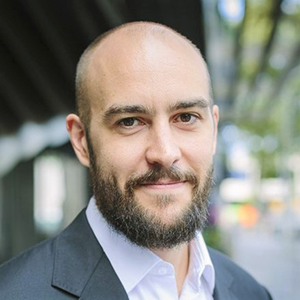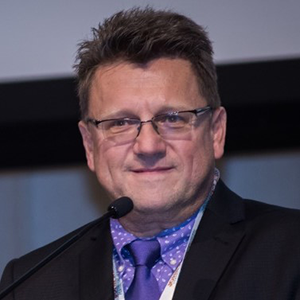What are you and your company doing to help reduce embodied carbon emissions?
Nancy Maribel
Marketing Director, Nexii Building Solutions
I grew up on in a rural farming town in East Texas that is unfortunately notable in the USA for the wrong reason – pollution. The Martin Lake Coal Plant located in my hometown is the “Top Sulfur and Mercury Polluter in the U.S.” “It costs $1 billion in public health expenses annually… and beneath the soil, the plant’s toxic ash lagoons have leaked boron, cobalt, and manganese into groundwater sources” making our tap water undrinkable.
Seeing the daily toxic effects of the Coal Plant on the members of my community had a profound effect on me growing up. At night the air pollution was visible from our house, and I just knew that I had to help somehow.
After graduating from University with a BA in Journalism-Advertising, I worked for a sustainable developer in Bellevue and was inspired to continue to work with sustainable engineering and architecture firms. I also volunteered my time and sat on local non-profit boards dedicated to supporting sustainable building developments.
A few years ago, I heard about Nexii, a start-up that had invented a new type of building material and really fell in love with the mission of the organization. Nexii developed a breakthrough building material, Nexiite, that has comparable properties to concrete but contains no Portland cement or lime, significantly reducing end-to-end carbon emissions.
Nexii recently signed the WorldGBC’s Net Zero Carbon Buildings Commitment to reduce all portfolio operational carbon emissions by 2030 or earlier and maximize reductions of embodied carbon in new developments or major renovations, compensating for any residual emissions.
Nexii is also identifying new ways to repurpose our buildings, so one of our buildings in Squamish was disassembled. According to the LCA conducted, “the ability to disassemble the Nexii panels intact, ready to be installed in a new location, offset 68% of the embodied carbon associated with the panel manufacturing.”[3]
I am super proud to sit on the Nexii Sustainability Council and directly support our goals around climate, nature, people, and community.

Nancy Maribel
“Seeing the daily toxic effects of the Coal Plant on the members of my community had a profound effect on me growing up. At night the air pollution was visible from our house, and I just knew that I had to help somehow.”
What are you and your company doing to help reduce embodied carbon emissions?
Will Nash
Position: Lead Engineer – Materials Performance & Corrosion Control, WSP Canada Inc.
I grew up in Melbourne, Australia, and from 1996 to 2010 we lived through a crippling drought, I remember my shoes melting to the road on hot days, the palpable fear of running out of water, the impact on agriculture and of course the Black Saturday bushfires of 2009. Climate change is already driving extreme weather, and without climate action my homeland is becoming increasingly inhospitable.
As a materials engineer most of my career has concentrated on building durable assets and extending the life of existing structures. Over the past few years I’ve come to recognize that the things we build represent massive investments of energy, resources, and of course embodied carbon. Still, it is not enough to simply make things last forever, a regenerative future requires a circular economy and our relationship with materials is at the heart of the transformation. There is lots of great research on circular and low carbon materials. I’m especially excited about the prospects of synthetic spider silk, ag-waste composites and carbon sequestering aggregates. However, it’s important to remember that the most impact can be made at the planning stage. By the time we are talking about materials much of the embodied carbon is locked in.
At WSP we are working with clients that are looking to lead the charge by preparing procurement strategies and designing structures that target the lowest lifecycle carbon. Our materials team work with the architectural and engineering disciplines to ensure that these low carbon materials can meet performance requirements, not only at completion, but throughout the asset lifecycle. By incorporating durability and maintenance requirements into asset management planning we help clients minimize ongoing demands on resources. At a higher level WSP advises governments planning and adapting for an uncertain future. It is fantastic to see how eagerly WSP staff have adopted the tenets of the circular economy that are now progressively being incorporated into all phases of our projects.

Will Nash
“I’m especially excited about the prospects of synthetic spider silk, ag-waste composites and carbon sequestering aggregates. However, it’s important to remember that the most impact can be made at the planning stage. By the time we are talking about materials much of the embodied carbon is locked in.”
What are you and your organization doing to help reduce embodied carbon emissions?
Kabira Ferrell
Vice President, Communications, Softwood Lumber Board
My favorite question as a child was ‘why’? I inquired about ocean tides, stars, the moon, trees, insects – you name it, I asked about it. This was equal parts exasperating and endearing to the adults in my life. I walked around in wonder at the natural world and I still feel that way. I live near the foothills of the Rocky Mountains where I’m surrounded by beauty that takes your breath away.
I’ve also watched as we have weather events we didn’t have when I was little, or even ten years ago. We face a mega-drought and catastrophic wildfires so the impacts of climate change are tangible in my daily life. I studied social movements in college and have seen how transformation can and does happen. I began working in what was then called CSR almost two decades ago. I know powerful transformation can happen when we commit to a common goal.
I am the carbon and climate lead for the Softwood Lumber Board, a USDA checkoff program that supports market development, research, technological advances, and other activities to expand the use of wood in today’s buildings. To reduce embodied carbon, the SLB is focused in two key areas: data transparency and carbon tools for AEC and other stakeholders; and advancing the use of timber in buildings as just one tool in the toolkit to reduce the carbon footprint of the built environment.
Through programming and public/private partnerships the SLB works to fill knowledge and research gaps for the design and construction community. The future we envision is that of healthy, low-carbon buildings on a thriving planet.

Kabira Ferrell
“I live near the foothills of the Rocky Mountains where I’m surrounded by beauty that takes your breath away. I’ve also watched as we have weather events we didn’t have when I was little, or even ten years ago. We face a mega-drought and catastrophic wildfires so the impacts of climate change are tangible in my daily life.”
What excites you most about what your organization is doing to help reduce embodied carbon emissions?
Mark Thompson Brandt
Founding Partner, Sr. Conservation Architect & Urbanist, MTBA Associates Inc., Ottawa
As a kid, I was captivated by the first moon landing, watched on TV. Soon after, that first iconic image of earth from space was a poster on my wall, which said, “Support your local planet.” At 12, I became the youngest ever Solar Energy Society of Canada member.
My adult gateway into seriously embracing sustainability and decarbonization came through my work in heritage preservation. It started with my Thesis Research term in that ancient and contemporary hothouse of adaptive renewal, Rome. It became clearer as our firm embraced urban design work with cultural heritage components in environmentally sensitive lands and waters. I soon realized that natural and cultural conservation spring from the same root, to preserve what we value. The need for humanity to save the planet and mankind’s cultural imprint upon it is beyond critical. Sustainable development (coming out of the Bruntland Report in the late 1980’s) and sustainable preservation (coming out of the renewed preservation movement in the 1990’s) both require similar approaches: highly collaborative; highly ethical, highly cross-disciplinary and requiring much due diligence, to succeed. Complex matrices, not repetitive formulas – my sweet spot.
Today, our firm is focused on the revitalization, reimagination, deep retrofit and rehabilitation of existing buildings. This is, in our view (and supported by IPCC reports), the biggest opportunity to attain our 2030 and 2050 GHG reduction targets. However, we must scale up and speed up the transformation of almost all our buildings world-wide. Architects and engineers in the built environment can make the difference. We know we must step up – and bring the policy and finance communities with us – to succeed.
Our firm is embracing a lighter carbon impact in our office and have appointed a sustainability officer to lead that goal. We are currently writing our 2nd Edition of a pan-Canadian Guide for Decarbonizing Buildings, called Building Resilience 2. And we work hard, in addition to our project work, with organizations such as the Zero Net Carbon Collaboration, the Climate Heritage Network and the Carbon Leadership Forum, to help achieve that critical mass of professionals urgently scaling up existing building decarbonization. Even if you strip a building back to its concrete or steel structure to reuse it, you have already saved more than 40% of the embodied carbon over an equal-sized new building.
A fast paradigm shift is needed in the industry. We’re working on it……

Mark Thompson Brandt
“As a kid, I was captivated by the first moon landing, watched on TV. Soon after, that first iconic image of earth from space was a poster on my wall, which said, “Support your local planet.” At 12, I became the youngest ever Solar Energy Society of Canada member.”







